-
 bitcoin
bitcoin $110918.433029 USD
-1.69% -
 ethereum
ethereum $3996.872473 USD
-2.43% -
 tether
tether $1.000594 USD
0.00% -
 bnb
bnb $1178.871834 USD
-2.38% -
 xrp
xrp $2.413973 USD
-3.47% -
 solana
solana $194.341461 USD
-4.24% -
 usd-coin
usd-coin $0.999963 USD
-0.03% -
 tron
tron $0.320092 USD
0.92% -
 dogecoin
dogecoin $0.196919 USD
-3.42% -
 cardano
cardano $0.669585 USD
-3.63% -
 hyperliquid
hyperliquid $37.485952 USD
-3.58% -
 ethena-usde
ethena-usde $1.000026 USD
-0.02% -
 chainlink
chainlink $18.018220 USD
-5.13% -
 bitcoin-cash
bitcoin-cash $523.879267 USD
-2.41% -
 stellar
stellar $0.324655 USD
-3.67%
What is the relationship between Bitcoin wallet addresses and multi-signatures?
Bitcoin wallet addresses, acting as public keys, are essential for multi-signature transactions, but don't directly participate in the signing process; multiple private keys are needed to authorize transactions, enhancing security.
Feb 28, 2025 at 03:24 am
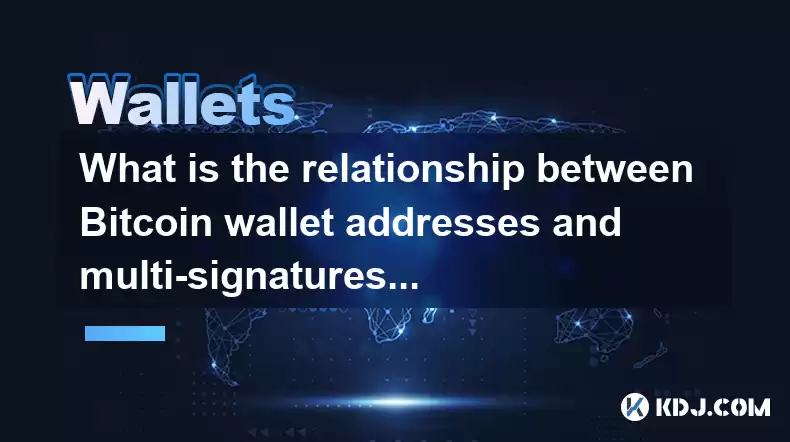
What is the Relationship Between Bitcoin Wallet Addresses and Multi-Signatures?
Key Points:- Bitcoin wallet addresses are essentially public keys, used to receive Bitcoin. They don't directly interact with multi-signature functionality, but are crucial for its implementation.
- Multi-signature (multisig) transactions require multiple private keys to authorize a transaction, enhancing security. The addresses involved in a multisig transaction are derived from the participating public keys.
- The complexity of setting up and managing multisig wallets varies depending on the implementation (e.g., hardware wallets, software wallets, custodial services).
- Different types of multisig configurations (e.g., 2-of-3, 3-of-5) offer varying levels of security and control.
- Security benefits of multisig include protection against theft, loss of private keys, and unauthorized access.
- Understanding the technical aspects of multisig requires knowledge of public key cryptography and digital signatures.
- Bitcoin Wallet Addresses: The Foundation of Bitcoin Transactions
A Bitcoin wallet address is essentially a public key hash. Think of it like your bank account number. It's a string of alphanumeric characters that uniquely identifies a specific destination for Bitcoin transactions. When you send Bitcoin to someone, you're sending it to their Bitcoin wallet address. This address doesn't directly reveal the underlying private key (which is analogous to your bank PIN or password) necessary to spend the Bitcoin. The address is generated from the public key using cryptographic hashing algorithms, making it computationally infeasible to derive the private key from the address alone. This is crucial for the security of the Bitcoin network. The address itself is not directly involved in the multi-signature process; rather, it's the public keys associated with the addresses that are used to create the multi-signature transaction. The relationship lies in the fact that the addresses are the endpoints for the transactions authorized by the multi-signature scheme. Each participating party in a multi-signature transaction contributes a public key which, in turn, is associated with a specific Bitcoin address. These addresses are where the Bitcoin is held and where the Bitcoin will be sent from after a successful multi-signature transaction. The transaction itself specifies which addresses will receive the Bitcoin and how many signatures are required to authorize the transaction. Therefore, the Bitcoin wallet addresses function as the visible identifiers for the funds managed under a multi-signature arrangement. They are the labels that help track and identify the Bitcoin that is subject to the multi-signature rules. Understanding how Bitcoin addresses are generated and their relationship to public and private keys is fundamental to understanding how multi-signature transactions function. Without this foundational understanding, the complexities of multi-signature transactions remain opaque.
- Multi-Signature Transactions: Enhancing Security Through Shared Control
Multi-signature (multisig) transactions introduce a crucial layer of security to Bitcoin transactions. Unlike standard transactions that require only one private key to authorize the spending of funds, multisig transactions require multiple private keys to authorize the same action. This means that several individuals or entities must cooperate to approve a transaction before it can be broadcast to the Bitcoin network and added to the blockchain. The number of required signatures and the total number of available keys define the multisig configuration. For example, a 2-of-3 multisig setup requires two out of three private keys to authorize a transaction, while a 3-of-5 multisig setup requires three out of five private keys. This collaborative authorization mechanism significantly reduces the risk of theft or loss of funds. If one private key is compromised, the remaining signers can prevent unauthorized spending. The process typically involves each participant signing a partial transaction, which is then combined to form a complete, valid transaction. The addresses used in a multisig transaction are derived from the public keys contributed by each participant. Therefore, a multisig wallet will typically have multiple addresses associated with it, each representing a portion of the overall control over the funds. The selection of a particular multisig configuration depends on the desired balance between security and convenience. A higher threshold (e.g., 3-of-5) offers greater security but requires more coordination among participants. A lower threshold (e.g., 2-of-3) is more convenient but offers less protection against compromised keys. The complexity of setting up and managing a multisig wallet varies significantly depending on the method used (e.g., using a specialized multisig wallet service, setting it up on a hardware wallet, or employing a custom software solution). The technical aspects require a good understanding of cryptographic concepts and potentially involve complex cryptographic operations.
- Implementing Multi-Signature Wallets: A Range of Options
The implementation of multi-signature wallets varies greatly, offering a spectrum of options tailored to different security needs and technical expertise. The simplest approach involves using a multisig wallet service provided by a cryptocurrency exchange or a dedicated custodial service. These services handle the technical complexities of managing the private keys and generating multisig transactions. However, this approach introduces a degree of trust in the third-party provider, potentially compromising security if the provider is compromised. A more secure option involves using a hardware wallet that supports multisig functionality. Hardware wallets offer a high level of security by storing the private keys offline, protected from malware and other online threats. Many hardware wallets allow users to create and manage multisig wallets with ease, providing a user-friendly interface for signing transactions. However, this option requires a thorough understanding of the hardware wallet's functionality and the multisig setup process. For users with advanced technical skills, creating a custom multisig wallet using software wallets or coding libraries is possible. This approach offers maximum control and flexibility, but it also requires significant technical expertise and carries a higher risk of errors. Each option presents a trade-off between security, ease of use, and control. The choice of implementation depends heavily on the specific needs and technical proficiency of the users involved. The level of security is also directly correlated with the chosen implementation. Using a reputable hardware wallet with a robust multisig setup is generally considered the most secure option, while relying on a third-party custodial service carries more risk.
- Security Advantages and Considerations of Multi-Signature Setups
Multi-signature wallets offer several significant advantages in terms of security. One of the most important is the protection against the loss or theft of a single private key. In a multisig setup, the loss of one private key does not necessarily compromise the entire wallet. As long as enough remaining keys are available to meet the threshold, the funds remain accessible. This significantly reduces the risk associated with single points of failure, a common vulnerability in standard single-signature wallets. Furthermore, multisig configurations can protect against unauthorized access, even if a private key is compromised. If an attacker gains access to one private key, they still need to obtain additional keys to authorize any transactions. This layered security significantly increases the difficulty for attackers to steal funds. However, the security of a multisig wallet is not absolute. The strength of the multisig setup depends heavily on the security of each individual private key. If all private keys are compromised, the funds are vulnerable, regardless of the multisig configuration. Therefore, it is crucial to secure each private key using best practices, such as strong passwords, offline storage, and regular security audits. The choice of multisig configuration also affects the security level. Higher thresholds (e.g., 3-of-5) offer better security but may be less convenient. Choosing the appropriate configuration requires a careful consideration of the security needs and the practical aspects of managing multiple keys.
- Technical Aspects of Multi-Signature Implementation: Public Key Cryptography
Understanding the technical aspects of multi-signature implementations requires a grasp of public key cryptography and digital signatures. Each participant in a multisig setup possesses a pair of keys: a private key and a corresponding public key. The private key is kept secret and is used to sign transactions. The public key is publicly shared and is used to verify signatures. When creating a multisig transaction, each participant uses their private key to sign a portion of the transaction. These partial signatures are then combined using cryptographic algorithms to create a complete signature that satisfies the multisig threshold. This complete signature is then attached to the transaction and broadcast to the Bitcoin network. The Bitcoin network verifies the signature using the public keys associated with the multisig setup. If the signature is valid and meets the required threshold, the transaction is added to the blockchain. The underlying cryptographic algorithms are complex and require a deep understanding of mathematics and computer science. However, the basic principle is that the combination of multiple signatures ensures that only authorized participants can spend the funds. The security of the multisig system relies heavily on the cryptographic strength of the algorithms used and the security of the private keys. Any weakness in the algorithms or compromise of the private keys can jeopardize the security of the funds.
FAQs:Q: Can I use a multi-signature wallet with just one address?
A: No. A multi-signature wallet requires multiple addresses, each associated with a participant's public key. These addresses represent the various portions of the control over the funds. The addresses themselves are not directly involved in the signing process, but they serve as the destinations for incoming and outgoing funds. The multi-signature aspect is handled through the private keys associated with these addresses.
Q: What happens if I lose one of my private keys in a 2-of-3 multisig setup?A: In a 2-of-3 multisig setup, losing one private key means you can no longer authorize transactions independently. You'll need to collaborate with the other participants who hold the remaining private keys to authorize transactions. However, as long as you haven't lost all private keys, your funds remain secure.
Q: Is a multi-signature wallet always more secure than a single-signature wallet?A: While multi-signature wallets offer enhanced security against loss or theft of a single private key, their security is dependent on the secure management of all participating private keys. If all keys are compromised, the multisig setup provides no additional protection. Proper security practices for each key are paramount, regardless of the wallet type.
Q: How do I choose the right multi-signature configuration (e.g., 2-of-3, 3-of-5)?A: The choice of configuration depends on the balance you seek between security and convenience. A higher threshold (e.g., 3-of-5) offers greater security but requires more coordination to authorize transactions. A lower threshold (e.g., 2-of-3) is more convenient but offers less protection against compromised keys. Consider the number of participants, the level of trust among them, and the potential risks involved.
Q: Can I use multi-signature for other cryptocurrencies besides Bitcoin?A: Yes, many cryptocurrencies support multi-signature transactions. The specific implementation details may vary depending on the cryptocurrency, but the fundamental concept of requiring multiple signatures for authorization remains the same. However, always verify the specific multisig support offered by the cryptocurrency in question.
Q: What are the potential downsides of using a multi-signature wallet?A: The main downsides are increased complexity in setting up and managing the wallet, the need for coordination among multiple participants to authorize transactions, and the potential for delays if one participant is unavailable or unresponsive. Furthermore, the security of a multisig wallet ultimately relies on the secure handling of all involved private keys; a breach of all keys compromises the funds regardless of the multisig configuration.
Disclaimer:info@kdj.com
The information provided is not trading advice. kdj.com does not assume any responsibility for any investments made based on the information provided in this article. Cryptocurrencies are highly volatile and it is highly recommended that you invest with caution after thorough research!
If you believe that the content used on this website infringes your copyright, please contact us immediately (info@kdj.com) and we will delete it promptly.
- Coinbase, BNB Token, and Fee Disputes: A New York Minute on Crypto's Latest Drama
- 2025-10-16 16:25:13
- B2B Payments Revolution: How API Integration and Virtual Cards are Changing the Game
- 2025-10-16 16:25:13
- Paxos, PYUSD, and Ethereum: A $300 Trillion Typo Heard 'Round the Crypto World
- 2025-10-16 16:45:12
- Pi Network, GCV, and Web3: Building a New Digital Reality
- 2025-10-16 16:45:12
- Bitcoin Rally: ETF Investors and Stephen Miran's Rate Cut Predictions
- 2025-10-16 16:50:01
- Bitcoin Options, Put Options, Crypto Crash: Decoding the Downturn
- 2025-10-16 16:30:01
Related knowledge
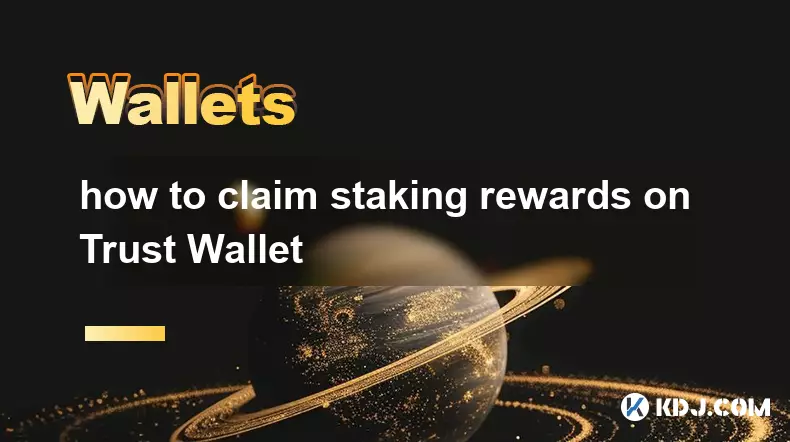
how to claim staking rewards on Trust Wallet
Oct 16,2025 at 02:00pm
Understanding Staking Rewards in Trust Wallet1. Trust Wallet supports staking for various Proof-of-Stake (PoS) blockchains such as Ethereum 2.0, Carda...
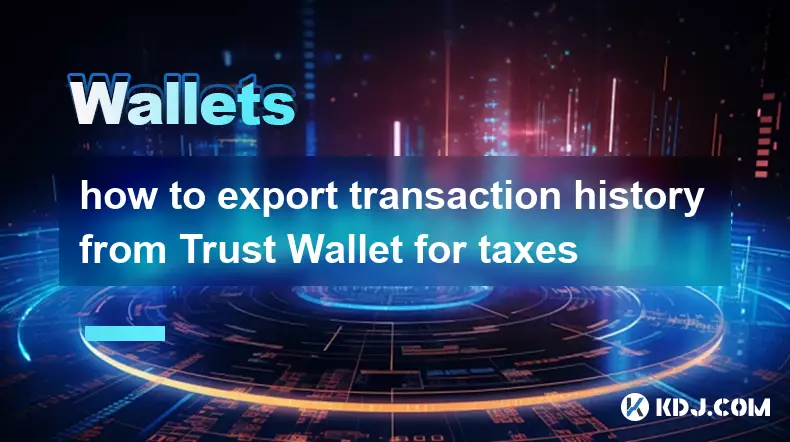
how to export transaction history from Trust Wallet for taxes
Oct 16,2025 at 04:19pm
Understanding Transaction History in Trust Wallet1. Trust Wallet stores all blockchain-based transactions made through its interface, including swaps,...
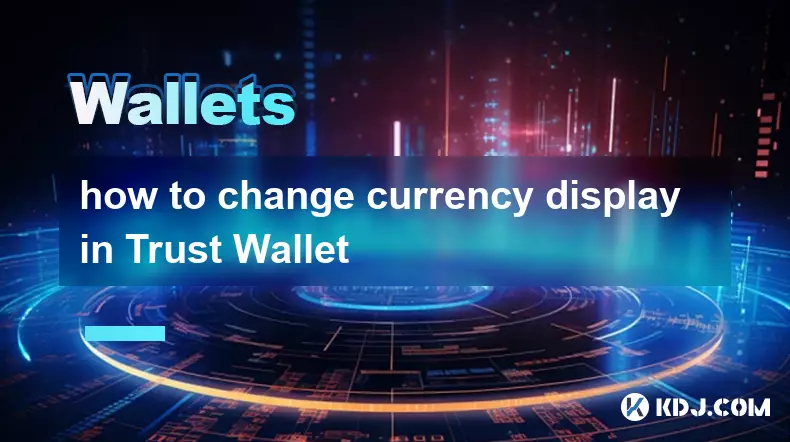
how to change currency display in Trust Wallet
Oct 16,2025 at 02:19pm
How to Change Currency Display in Trust WalletTrust Wallet is one of the most widely used cryptocurrency wallets, offering users a secure and intuitiv...

how to switch networks in Trust Wallet
Oct 16,2025 at 04:37pm
Understanding Network Switching in Trust Wallet1. Trust Wallet supports multiple blockchain networks, allowing users to manage various cryptocurrencie...
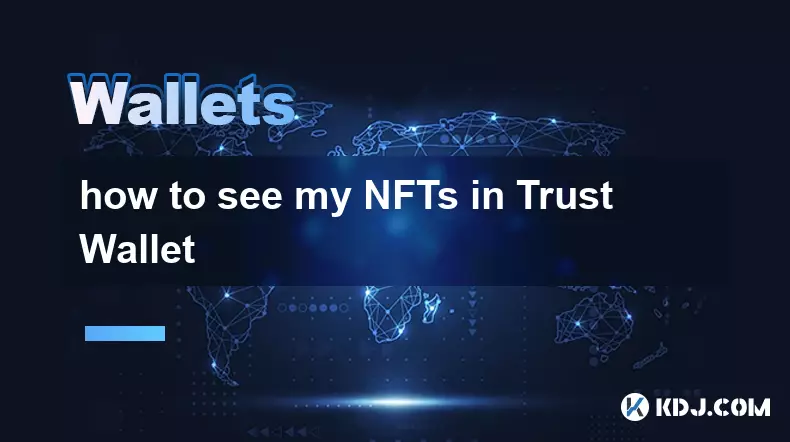
how to see my NFTs in Trust Wallet
Oct 16,2025 at 03:18pm
Accessing Your NFTs in Trust Wallet1. Open the Trust Wallet application on your mobile device and enter your password or use biometric authentication ...
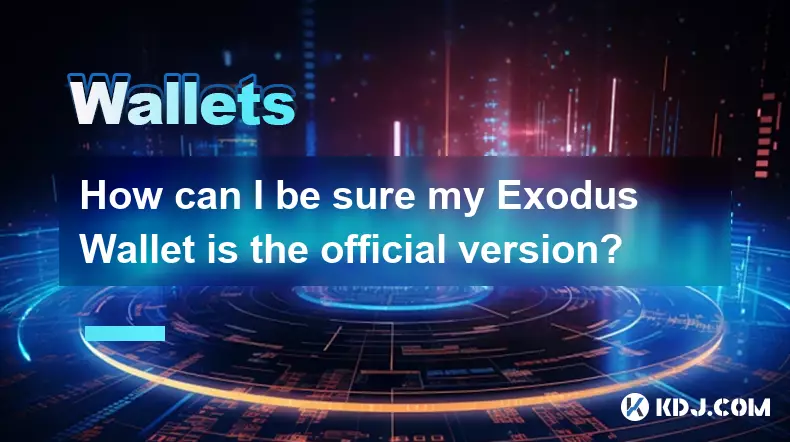
How can I be sure my Exodus Wallet is the official version?
Oct 14,2025 at 12:00pm
Verifying the Authenticity of Your Exodus Wallet1. Download Exodus only from the official website, exodus.com. Third-party app stores or peer-to-peer ...

how to claim staking rewards on Trust Wallet
Oct 16,2025 at 02:00pm
Understanding Staking Rewards in Trust Wallet1. Trust Wallet supports staking for various Proof-of-Stake (PoS) blockchains such as Ethereum 2.0, Carda...

how to export transaction history from Trust Wallet for taxes
Oct 16,2025 at 04:19pm
Understanding Transaction History in Trust Wallet1. Trust Wallet stores all blockchain-based transactions made through its interface, including swaps,...

how to change currency display in Trust Wallet
Oct 16,2025 at 02:19pm
How to Change Currency Display in Trust WalletTrust Wallet is one of the most widely used cryptocurrency wallets, offering users a secure and intuitiv...

how to switch networks in Trust Wallet
Oct 16,2025 at 04:37pm
Understanding Network Switching in Trust Wallet1. Trust Wallet supports multiple blockchain networks, allowing users to manage various cryptocurrencie...

how to see my NFTs in Trust Wallet
Oct 16,2025 at 03:18pm
Accessing Your NFTs in Trust Wallet1. Open the Trust Wallet application on your mobile device and enter your password or use biometric authentication ...

How can I be sure my Exodus Wallet is the official version?
Oct 14,2025 at 12:00pm
Verifying the Authenticity of Your Exodus Wallet1. Download Exodus only from the official website, exodus.com. Third-party app stores or peer-to-peer ...
See all articles


























![Web3 Crypto Market Morning Report: The market is in decline, altcoins have fallen by more than 5%, Binance compensation has been received, and Memes on the Bnb chain have collectively plummeted [Vic TALK Issue 1444] Web3 Crypto Market Morning Report: The market is in decline, altcoins have fallen by more than 5%, Binance compensation has been received, and Memes on the Bnb chain have collectively plummeted [Vic TALK Issue 1444]](/uploads/2025/10/16/cryptocurrencies-news/videos/web-crypto-market-morning-report-market-decline-altcoins-fallen-binance-compensation-received-memes-bnb-chain-collectively-plummeted-vic-talk-issue/68f043c9c8b44_image_500_375.webp)















































